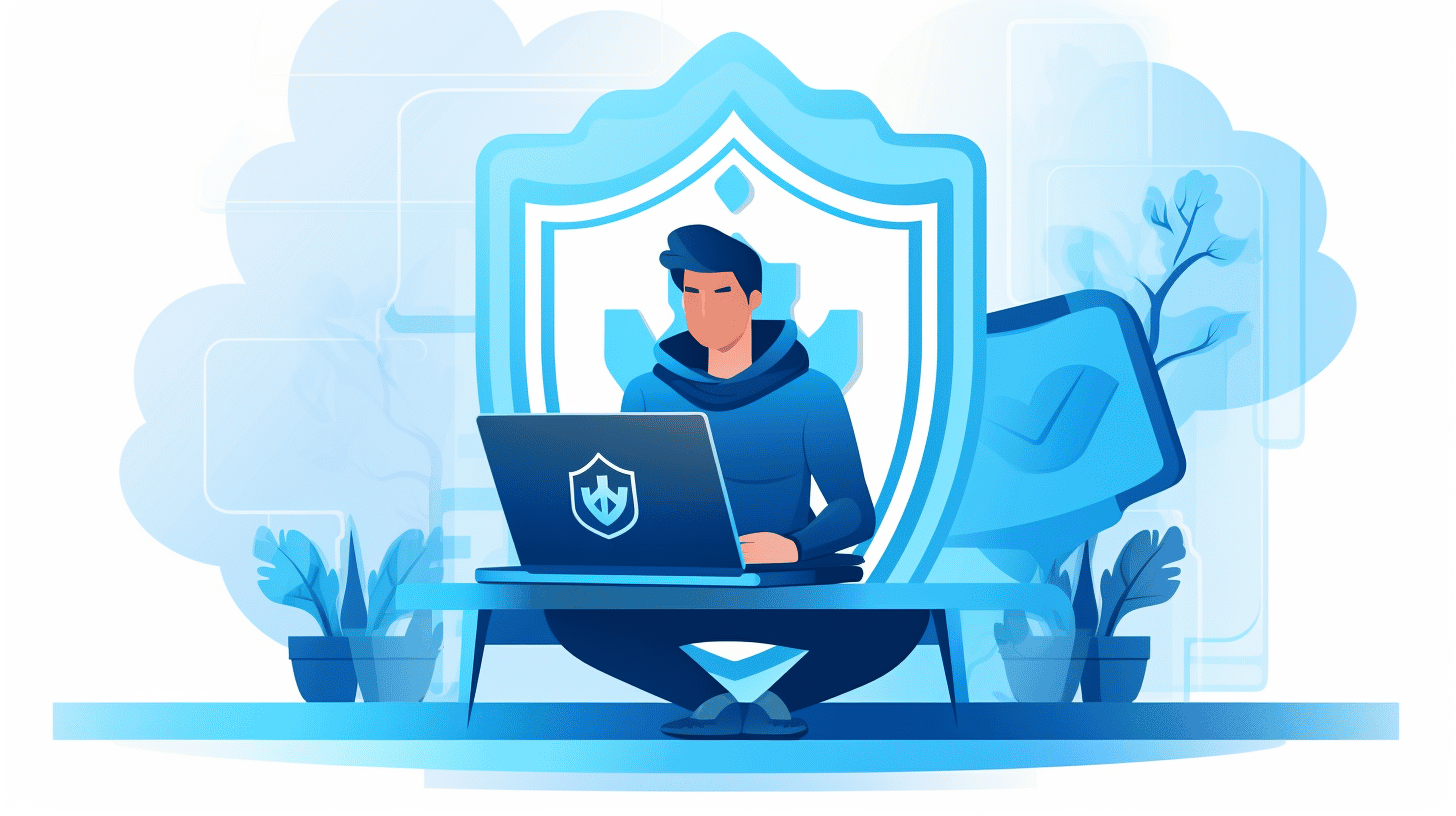在這個數位時代,擁有可靠的網路形象對於企業和個人來說都至關重要。無論您經營的是個人部落格還是電子商務網站,確保您的 WordPress 網站始終正常運作對於保持積極的用戶體驗和最大限度地擴大您的影響力至關重要。
我們都經歷過網站因停機而無法訪問的沮喪。它不僅會給訪客留下負面印象,還會導致收入損失和品牌聲譽受損。這就是為什麼採取主動措施防止停機並為意外中斷做好準備至關重要。
在本文中,我們將探討停機的概念及其含義,並為您提供維護可靠線上的 WordPress 網站的實用技巧和策略。我們將涵蓋從監控您網站的正常運行時間到實施備份系統和效能優化技術的所有內容。最後,您將全面了解如何保護您的網站免於停機並確保無縫的用戶體驗。
所以,讓我們深入研究並拒絕停機!
了解停機時間

⏰ 什麼是停機時間?
每個人都經歷過這樣的令人沮喪的時刻:當他們嘗試訪問網站或使用應用程式時,卻只看到錯誤訊息或似乎永無止境的載入畫面。我的朋友們,這就是所謂的 停機時間.
簡單來說,停機時間是指網站、應用程式或系統不可用或未如預期運作的任何時間段。它與正常運作時間相反,正常運作時間表示網站或系統正常運作的時間。停機時間可能從幾秒鐘到幾個小時不等,並且可能由於多種原因而發生。
🚧 停機的影響
停機可能會產生深遠的影響,不僅影響依賴線上業務的企業和組織,還影響依賴這些服務的最終用戶。讓我們仔細看看停機的一些主要影響:
- 收入損失: 對於電子商務網站來說,每分鐘的停機都可能導致銷售和收入的損失。根據 Statista 的一項研究,網站停機每分鐘平均會對企業造成 $5,600 的損失。這可不是小變化啊!
- 聲譽損害: 無論是小型部落格還是跨國公司,長時間的停機都會嚴重損害品牌聲譽。客戶可能會對公司提供可靠服務的能力失去信任,導致失去客戶和潛在的商機。
- 客戶不滿意: 想像一下,當您在停機期間嘗試訪問網上銀行平台並急需付款時。談論挫折!停機可能會讓客戶感到煩惱、不便,並且更有可能尋找替代方案。
- 生產力下降: 停機不僅影響外部用戶;它還會影響內部營運。如果公司的內部系統出現停機,員工可能無法存取關鍵數據,導致生產力下降和基本任務的完成延遲。
- SEO影響: 谷歌等搜尋引擎在對搜尋結果進行排名時會考慮網站的可用性。如果您的網站經常停機,其搜尋引擎排名可能會受到影響,使潛在客戶更難找到您。
顯然,停機時間對於企業和個人來說都是一個重大問題。好消息是,我們可以採取措施最大限度地減少停機的影響並確保流暢的用戶體驗。在下一節中,我們將探討一些減少停機時間和最大化正常運作時間的策略。
如何檢查你的 WordPress 網站的正常運作時間
在執行 WordPress 網站時,需要考慮的關鍵因素之一是正常運作時間。簡而言之,正常運作時間是指您的網站可用且可供訪客造訪的時間。確保您的 WordPress 網站具有較高的正常運行時間對於維持積極的用戶體驗和最大限度地發揮您網站的潛力至關重要。在本文中,我們將探討一些有效的方法來檢查您的 WordPress 網站的正常運作時間,以便您可以隨時了解網站的效能。
監控工具
要監控 WordPress 網站的正常運作時間,您可以利用提供即時數據和通知的各種監控工具。這些工具會不斷檢查您網站的可用性並提供有關正常運行時間和回應時間的統計資料。以下是一些值得考慮的熱門監控工具:
- 正常運作時間機器人:UptimeRobot 是一款可靠且使用者友好的監控工具,可定期檢查您的 WordPress 網站的正常運作時間。它提供免費和付費計劃,讓您可以同時監控多個網站。
- 平多姆:Pingdom 是另一種提供全面正常運作時間監控的熱門監控工具。當您的網站遇到停機時,它會透過電子郵件或簡訊提供詳細的報告和警報。
- Site24x7:Site24x7 是一個強大的監控解決方案,它不僅可以監控您的 WordPress 網站的正常運行時間,還可以提供對各種效能指標的洞察。它提供廣泛的監控選項並與 WordPress 無縫整合。
正常運作時間基準
雖然每個網站都追求 100% 的正常運行時間,但重要的是要了解,由於伺服器維護、更新或不可預見的情況,某些停機是不可避免的。然而,您應該遵循行業標準基準來確保網站的可靠性和可訪問性。以下是需要牢記的幾個基準:
- 99.9% 正常運作時間:目標是讓您的 WordPress 網站實現至少 99.9% 的正常運作時間。這相當於每月停機時間少於 44 分鐘,這在行業標準中是可以接受的。
- 停機通知:確保您的網站在停機時都能收到通知。這使您可以及時解決任何問題並最大限度地減少對訪客的影響。
- 效能監控:除了正常運作時間監控,還要考慮實施效能監控。這包括監控伺服器回應時間、頁面載入速度和其他效能指標,以確保最佳使用者體驗。
總而言之,檢查 WordPress 網站的正常運作時間對於維護可靠且可存取的網站至關重要。透過利用監控工具並瞄準行業標準基準,您可以隨時了解網站的正常運行時間並採取必要的措施來最大限度地減少停機時間。請記住,一個始終可用的網站不僅可以增強用戶體驗,而且還有助於您的整體線上成功。
防止停機
停機對於任何網站所有者來說都可能是一個重大挫折。這不僅會讓訪客感到失望,還會影響您的線上聲譽並導致收入損失。幸運的是,您可以採取多種措施來防止停機並確保您的網站順利運作。在本文中,我們將探討一些有效的方法來保持您的網站正常運作。
選擇可靠的託管服務
防止停機的最重要方面之一是選擇可靠的託管服務。可靠的託管服務提供者可確保您的網站始終可供訪客存取。以下是選擇託管服務時需要考慮的一些關鍵因素:
- 正常運轉時間保證:尋找提供高正常運作時間保證的託管服務供應商,理想情況下為 99.9% 或以上。這可以確保您的網站幾乎一直可供訪客存取。
- 伺服器位置:選擇伺服器靠近目標受眾的託管服務。這減少了延遲並縮短了載入時間。
- 可擴展性:考慮一個託管服務提供者,它允許您隨著網站的發展輕鬆擴展您的資源。這可確保您的網站可以處理增加的流量而不會停機。
實施備份系統
建立可靠的備份系統對於防止停機至關重要。備份不僅可以在發生不可預見的情況時保護您的數據,而且還允許您在出現問題時快速恢復您的網站。實施備份系統時需要牢記以下幾點:
- 頻率:定期安排備份以確保您擁有網站資料的最新版本。根據您網站更新的頻率,每日或每週備份可能比較適合。
- 異地存儲:將您的備份儲存在與網站伺服器不同的位置。這可以在伺服器故障或其他災難發生時保護您的資料。
- 測試備份:定期測試您的備份以確保其完整性和可靠性。這使得您能夠在問題出現之前快速識別並修復任何問題。
定期 WordPress 維護
維護您的 WordPress 網站對於防止停機和確保最佳效能至關重要。定期更新和維護任務可以幫助您的網站保持順利運作。以下是一些基本的維護做法:
- 更新 WordPress:保持您的 WordPress 核心、主題和外掛程式更新,以受益於最新的安全性修補程式、錯誤修復和效能改進。
- 刪除不必要的外掛和主題:未使用或過時的外掛程式和主題可能會減慢您的網站速度並帶來安全風險。定期審核並刪除任何不必要的元素。
- 優化資料庫:定期優化您的 WordPress 資料庫以提高網站效能並減少停機的可能性。
使用效能優化技術
效能優化在防止停機和提供無縫用戶體驗方面發揮著重要作用。以下是一些優化網站效能的技巧:
- 快取:實作快取技術來儲存網站的靜態元素,減少伺服器負載並提高頁面載入時間。
- 影像優化:壓縮和優化圖像以減小其檔案大小而不犧牲品質。這有助於改善頁面載入時間,尤其是在行動裝置上。
- 縮小:縮小 CSS、JavaScript 和 HTML 檔案以減少其大小並提高網站效能。
透過實施這些預防措施,您可以最大限度地降低停機風險並確保您的網站始終正常運作。請記住,定期維護、備份系統和選擇可靠的託管服務是防止停機和提供出色使用者體驗的關鍵。
處理意外停機
沒有人喜歡意外停機,但不幸的是,這是每個網站所有者在某個時候都必須處理的事情。無論是由於伺服器問題、網路攻擊還是簡單的人為錯誤,停機都會令人沮喪且代價高昂。然而,如果採用正確的方法,您可以最大限度地減少影響並使您的網站恢復並順利運行。在本文中,我們將探討一些策略來幫助您有效地處理意外停機。
緊急應變策略
當面臨意外停機時,制定緊急應變策略以確保迅速有效地解決問題非常重要。您可以採取以下幾個步驟:
- 確定問題:第一步是確定停機的原因。檢查您的伺服器日誌或聯絡您的主機服務提供者以收集有關該問題的資訊。快速識別問題將有助於您更快找到解決方案。
- 內部溝通:一旦您發現問題,請與您的內部團隊(如果有)進行溝通。透過讓每個人都了解情況,你們可以共同努力迅速解決問題。確保每個人都了解情況以及他們在恢復過程中各自的角色。
- 獲得託管 WordPress 支持:如果您已安裝託管 WordPress 支援服務,那麼在停機期間,它們可以成為寶貴的資源。他們可以提供專家協助,識別並解決問題,並使您的網站盡快恢復線上。如果您沒有託管 WordPress 支援服務,考慮投資一項服務可以有助於減輕未來的停機時間。
停機恢復
一旦導致停機的問題得到解決,重要的是專注於有效地恢復您的網站,以盡量減少對使用者的影響。您可以執行以下操作:
- 執行停機後審計:停機後,請花時間對您的網站進行徹底的審核。檢查停機期間是否有任何資料或功能遺失、連結中斷或任何其他可能出現的問題。及時解決任何問題以確保無縫的用戶體驗。
- 與用戶溝通:在停機期間讓使用者了解情況至關重要。對問題、原因以及解決問題所採取的步驟保持透明。透過電子郵件、社群媒體或專門的狀態頁面提供定期更新有助於建立信任並讓使用者了解情況。
- 採取預防措施:從停機中恢復後,必須實施預防措施以避免將來再次發生此類事件。這可以包括定期備份、安全審計、監控工具和冗餘措施。採取主動措施,您可以最大限度地減少將來遇到類似停機的可能性。
在停機期間與用戶溝通
在停機期間,與使用者進行有效溝通對於管理他們的期望和維持信任至關重要。以下是停機期間與使用者溝通的一些技巧:
- 提供清晰的錯誤訊息:當用戶遇到您的網站停機情況時,他們應該會看到一條清晰的錯誤訊息來解釋情況。這將幫助他們理解該問題是暫時的,並向他們保證您正在努力解決該問題。
- 利用社群媒體:利用社群媒體平台為您的用戶提供及時更新。定期發布有關解決停機問題的進度、預計恢復時間以及任何其他相關資訊的更新。與您的用戶互動並及時回應他們的疑問或疑慮。
- 設定專用狀態頁面:考慮設定一個專門的狀態頁面,提供停機情況的即時更新。該頁面可以作為用戶獲取有關停機及其解決進度的最新資訊的中心樞紐。
總而言之,意外停機可能會帶來挑戰,但透過明確的緊急應變策略、有效的恢復措施以及與用戶的主動溝通,您可以最大限度地減少影響並確保網站訪客獲得無縫體驗。請記得聘請託管 WordPress 支援服務以獲得專家協助,並考慮實施預防措施以減輕未來的停機時間。
投資停機保護服務
不要讓停機影響您的業務!立即投資停機保護服務!
在當今快節奏的數位世界中,企業嚴重依賴科技來有效運作。然而,科技並不是萬無一失的,停機可能會在你最意想不到的時候發生。無論是由於硬體故障、自然災害還是網路攻擊,任何停機時間都可能導致收入損失、聲譽受損和客戶失望。這就是為什麼投資停機保護服務不僅是一種奢侈,而且是一種必需品!
停機成本:不只是財務成本
停機可能會對您的業務造成嚴重後果,其影響遠遠超出直接的財務損失。以下是停機可能對您的組織產生影響的一些方式:
- 收入損失: 當您的系統發生故障時,您就無法為客戶提供服務或處理交易。這直接導致銷售和收入的損失。
- 生產力下降: 員工無法完成任務並為公司的發展做出貢獻,導致生產力下降。
- 聲望受損: 客戶希望企業能夠全天候提供服務,一旦遇到停機,他們很快就會失去信任。受損的名譽很難恢復。
- 客戶流失: 遭遇停機的不滿意客戶更有可能將業務轉移到其他地方,從而導致客戶流失。
停機保護服務的好處
投資停機保護服務可帶來眾多好處,並有助於保護您的業務免受潛在的停機風險。以下是您應該考慮進行此項投資的一些原因:
- 最大限度地減少收入損失: 停機成本可能很高,但透過實施停機保護服務,您可以確保快速恢復並最大限度縮短停機時間,從而最大限度地減少財務影響。
- 確保業務連續性: 停機保護服務提供強大的備份和災難復原解決方案,確保您的關鍵資料和系統的安全,並能在發生事故時快速復原。
- 提高客戶滿意度: 透過投資停機保護服務,您表明了您致力於為客戶提供不間斷服務的承諾。這可以顯著提高客戶滿意度和忠誠度。
- 提高生產力: 透過停機保護服務,您可以減少停機事件並讓您的員工專注於工作,從而提高工作效率。
- 保持競爭優勢: 在當今競爭激烈、客戶期望很高的環境下,投資停機保護服務可為您的企業帶來策略優勢,超越那些尚未優先考慮停機預防和恢復的競爭對手。
選擇正確的停機保護服務
為您的企業選擇停機保護服務時,請牢記以下因素:
- 可靠性: 尋找在停機預防和復原方面擁有良好業績記錄的服務提供者。閱讀客戶評論,評估提供者的聲譽,並確保他們的解決方案滿足您的業務需求。
- 可擴充性: 您的停機保護服務應該足夠靈活,以隨著您的業務成長而成長。隨著您的業務擴展,該解決方案應該能夠輕鬆適應增加的工作量和不斷發展的技術環境。
- 相容性: 確保停機保護服務與您現有的系統和軟體無縫整合。這減少了實施過程中的中斷並確保了員工的順利過渡。
投資停機保護服務是對您企業未來的投資。透過主動降低停機風險,您可以確保不間斷運營,保護您的財務狀況,並在市場上保持良好的聲譽。
因此,不要讓停機時間影響您的業務!立即採取行動並投資停機保護服務,以保護您的業務免受意外影響。您的客戶、員工和底線都會感謝您!
結論
總之,維護可靠且持續在線的 WordPress 網站對於您的數位形象的成功至關重要。停機可能會對您網站的效能、使用者體驗甚至您的聲譽產生重大影響。透過了解停機的概念,定期監控站點的正常運作時間,實施預防措施以及製定明確的緊急應變策略,您可以最大限度地減少意外停機的影響。
投資停機保護服務(例如 Managed-WP 等可靠的託管服務)可以讓您高枕無憂,因為您知道您的網站處於安全的手中。 Managed-WP 是一個高級託管 WordPress 雲端託管平台,提供專家的 24/7/365 WordPress 支援、備份管理、修補程式管理和主動監控。使用 Managed-WP,您可以簡化基礎設施,在數位化工作中體驗自由,並確保 WordPress 網站不間斷可用。
不要讓停機時間阻礙您的線上成功。採取積極措施,有效預防和處理。相信像 Managed-WP 這樣可靠的託管服務可以為您提供必要的工具和支持,以維護 WordPress 網站始終在線。立即踏上更可靠的線上形象之旅。
🌐 了解有關託管 WP 的更多信息 🌐
常見問題解答
- 什麼是網站停機時間?
網站停機時間是指網站無法存取或訪客無法使用的一段時間。它可能由伺服器問題、維護或網路問題等多種因素引起。
- 網站頻繁宕機可能帶來哪些後果?
網站頻繁停機會導致糟糕的用戶體驗、流量損失、搜尋引擎排名下降,並最終導致您的線上業務收入和聲譽損失。
- 如何最大限度地減少我的 WordPress 網站的停機時間?
為了最大限度地減少網站停機時間,請確保選擇可靠的託管服務提供商,定期更新 WordPress 核心、主題和插件,監控網站效能和正常運行時間,使用內容分發網路 (CDN),並製定備份和災難復原計劃。
- 是否有任何 WordPress 外掛可以幫助防止停機?
是的,有 Jetpack、UpdraftPlus 和 WP Rocket 等外掛程式可以透過提供網站監控、自動備份和效能優化等功能來幫助防止停機。
- 如果儘管採取了預防措施,我的 WordPress 網站仍然頻繁宕機,我該怎麼辦?
如果您的 WordPress 網站仍然頻繁停機,請考慮升級您的託管計劃、優化您網站的程式碼和腳本、檢查外掛程式是否有衝突,並尋求經驗豐富的 WordPress 開發人員或支援團隊的協助。



















